There are many species of animals on the planet. Even if you are an avid animal lover, many lesser recognised animals don’t get more recognition as cute koalas and endearing quokkas.
These animals may have odd names, but just like every other animal species on the planet, they are equally crucial to maintaining the health and balance of natural habitation.
1. Antechinus
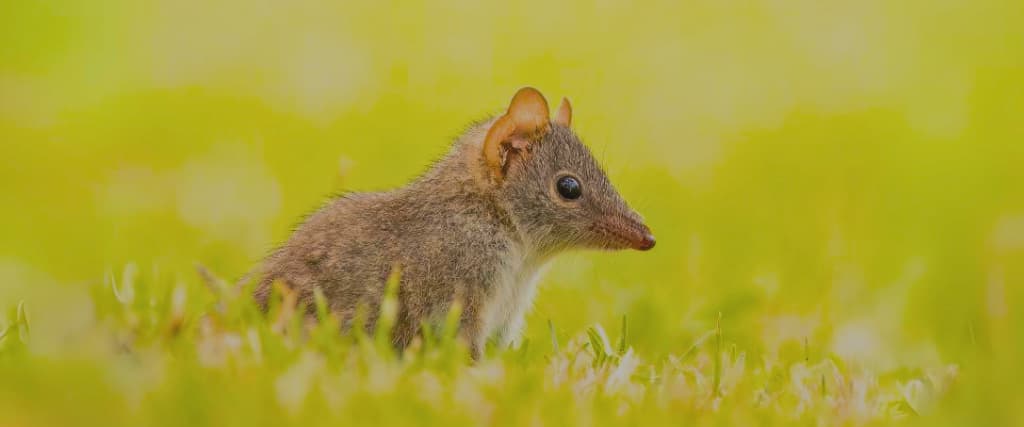
A genus of Australian marsupials known as antechinus resembles mice in appearance and movement, and they were sometimes referred to as “marsupial mice.”
Antechinus was given its scientific name for the first time in 1841. It combines the Greek words “anti” and “ekhinos.” Most Greek and Latin allusions to “ant, anti, or ante” allude to anything that is “against” or “opposed to.” Dictionary definitions of “ekhinos” include hedgehog or sea urchin. The Antechinus is undoubtedly a placental animal with a pointed snout and bristly hair, much as the hedgehog. Thus, “Antechinus” does not refer to a hedgehog.
Most species of antechinus engage in semelparity, called “big-bang” replication, during the mating season. Males may only reproduce once in their lifespan before passing away shortly after the breeding season. In animals, this habit is relatively uncommon.
2. Monjon
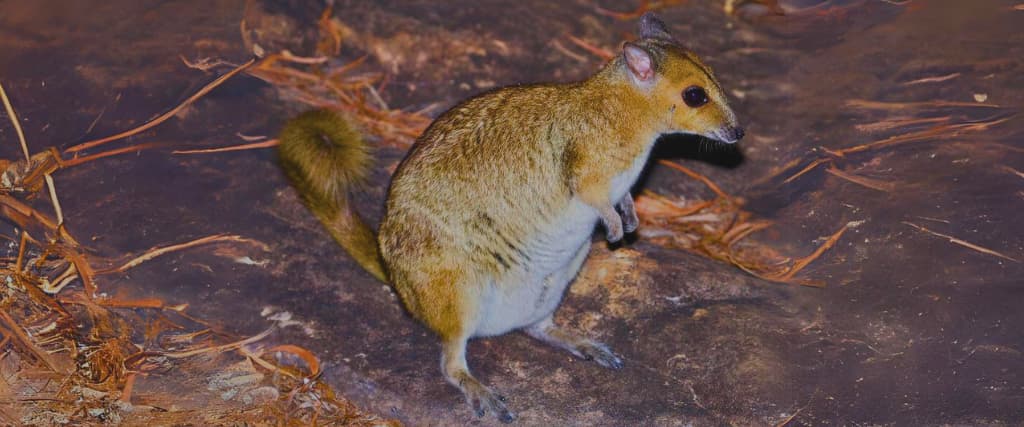
The Monjon is one of the tiniest rock wallabies in Australia. Just 20 to 25cm long, they weigh an average of 1.5kg. The Kimberley zone and neighbouring islands are the only places this species may be found.
Among the sandy sandstone, Monjon’s dwell in caves and other crevices. Grass and plants make up the bulk of their food. The Monjon’s most significant dangers are likely changed fire patterns and maybe feral cat predation.
The Monjon was only found in the 1960s because of its secluded location in the rocky northwest Kimberley.
3. Sawfish

You’ve probably heard about Swordfish. A quarter of all sharks and rays are at risk of extinction, making them among the most endangered creatures on the planet. Sawfish are among the most endangered sharks and rays.
Three species of sawfish, including the Green Sawfish, the highly endangered Largetooth Sawfish and the endangered Dwarf Sawfish, reside in the Fitzroy River. In the Kimberley, the Mangala and Nyikina people refer to them as a group as “Biyal-biyal.” The Fitzroy River’s habitat and flow are being protected for these remarkable fish due to their collaboration with these Conventional Owners to develop the Walalakoo Plan.
This sawfish is one of the largest fish in the world. It can grow to be almost 6.5 meters. It is a “euryhaline” species, which can move quickly from lakes to oceans and back again. It lives in many different places.
4. Western Gobbleguts
Because it seems like the male Cardinalfish (Apogon rueppellii) is devouring his eggs, this Cardinalfish family has been dubbed “Gobbleguts.”
Gobbleguts’ couple up during courting and spawning. It is common for male mouthbrooders to devour their eggs since they control incubation. He can hatch between 60 and 250 fertilised eggs in an incubation period of roughly two weeks.
Despite their small stature, they may grow to a top length of 13cm. The shallow seagrass habitats surrounding Perth, Papua New Guinea, and Northern Territory are home to most of these fish species.
5. Nabarlek
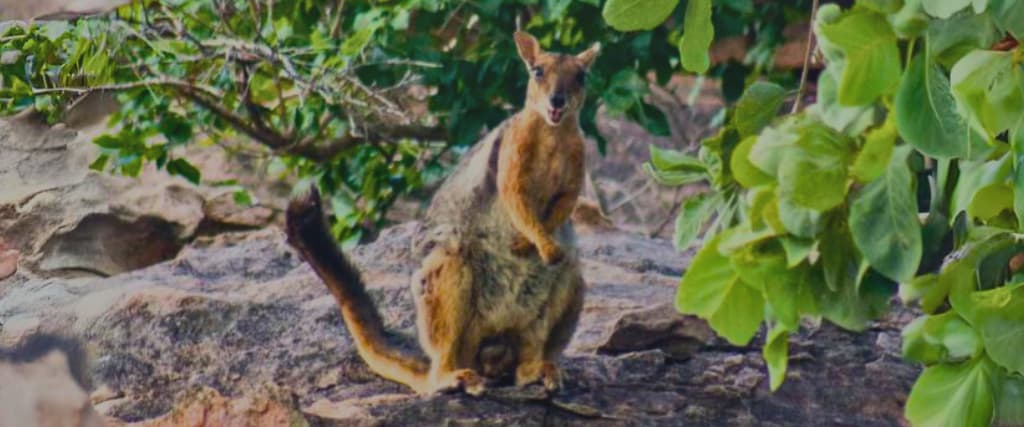
The Pygmy Rock-wallaby and Little Rock-wallaby are other names for the Nabarlek. Petrogale concinna is the name of the species. A little rock wallaby, the Nabarlek is related to the Monjon and is a family member. Their name is derived from the Kunwinjku language of West Arnhem Land.
Although the Nabarlek is smaller than most other macropods, this is not the sole distinction that makes them unique. They often replace their molar teeth, which allows them to consume sedges and other blooming grasses.
Sandstone formations, granitic outcrops, boulder clumps, and rocky slopes with little flora make up their habitat. They are endangered due to their tiny numbers and preference for eating wild cats.
They are restricted to the Northern Territory’s Top End and Kimberley.
6. Australian Bustard
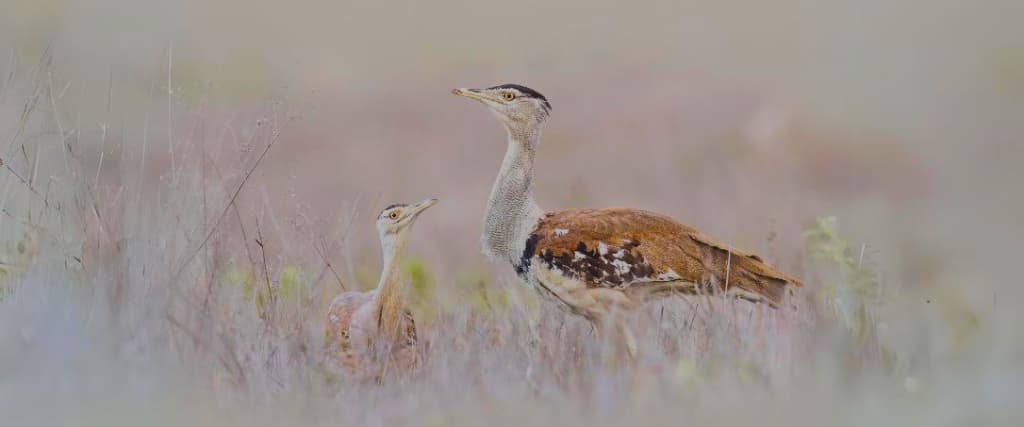
The Australian Bustard, called Ardeotis australis, is one of the giant birds in Australia. They are primarily found in grasslands, wooded areas, and open farmland in northern Australia and New Guinea. The bustard is about one meter tall, and its wings are about twice that long. People often call them Plains Turkeys, and people in Central Australia call them Bush Turkeys.
The bustard saunters with its head and neck held high, giving it a “snobby” look. When it is scared, it will slowly walk away while still looking around. When it does fly, it does so quickly and strongly, with the tips of its wings spread and bent up.
If there are a lot of mice or grasshoppers, Australian Bustards will eat a lot of food because there is so much of it.
7. Woylie
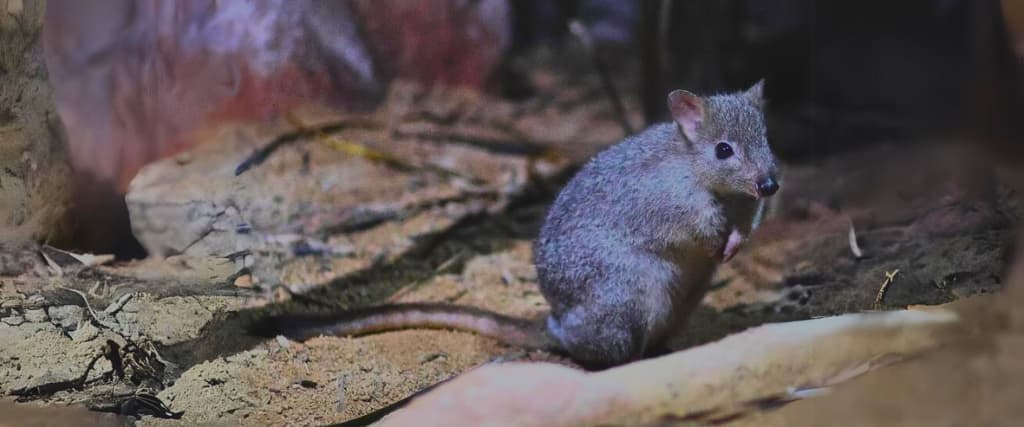
Only found in Australia, the Brush-tailed Bettong, also known as the Woylie, is an exceedingly unique marsupial that is the size of a rabbit. This name is derived from the Nyungar word “walyu”. Woylies were also known as “farting rats” by bushmen because of the loud noise they made when startled.
The Woylie consumes mostly mushrooms and will cultivate for various fruiting bodies, similar to potoroos and other bettong species. When the Woylie were broad and numerous, they probably had a significant impact on the movement of saprophyte spores that promoted the growth of native plants in arid habitats.
The advent of foxes and cats led to the rapid collapse of these little Australian marsupials, as it did with many other small marsupials. Along with clearing land for agriculture, other causes include illness, food competition from rabbits, changes to fire regimes, and effects of grazing animals.
8. Common Spotted Cuscus

Cuscuses are among the world’s cutest marsupials, and there’s no doubt about it. It’s a white and caramel fluffball of the spotted type. They may be found all across New Guinea, as well as in the rainforests of the Cape York Peninsula in Queensland.
Cuscus is roughly the size of a house cat with a slow, sluggish gait.
While Spilocuscus maculatus, also known as the Common Spotted Cuscus has a stunning coat that makes it one of the most beautiful marsupials on the planet, it also serves as a radar in the forest canopy.
What is this golden possum’s method of avoiding predators at night? When tree hollows are sparse, it has been sighted with its head snuggled between its legs and an enormous palm frond looped around its body like a plush blanket.
9. Pademelon
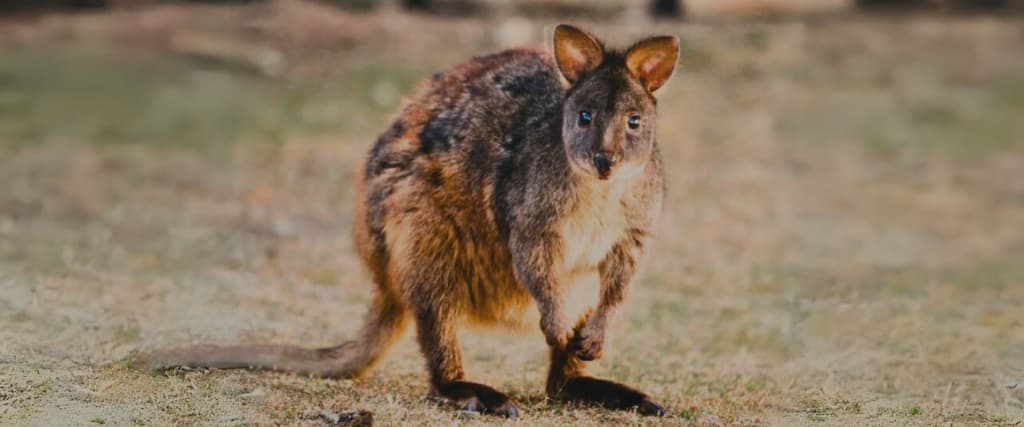
The term “badimaliyan” from the Dharuk Aboriginal language of Port Jackson, New South Wales, is the source of the name Pademelon.
The pademelon is a tiny mammal that belongs to the same family as wallabies and kangaroos. In Australia, there are three species, while there are four more in New Guinea. The pademelon is now endangered by predators and land clearance, having been targeted for its flesh and soft fur by Aboriginals and Europeans.
Pademelons act as the forest’s watchdogs, banging the ground loudly with their rear legs to alert other animals to danger.
10. Giant Panda Snail

One of Australia’s most significant land snails is the Giant Panda Snail (Hedleyella falconeri). This also goes back to the Gondwana epoch, when Australia was still connected to Antarctica and India.
This species may be found in eastern Australia between Smiths Lake in New South Wales and just north of Brisbane. The Great Dividing Range may be located to the west of it. Forests love it because of the moss and leaf litter it produces.
It becomes more active after a downpour to keep water from escaping from its delicate body.
11. Angasi Oyster

Sydney Rock Oyster and Pacific Oyster are well-known, but have you tried Australia’s lesser-known native, the Angasi Oyster (Ostrea angasi), yet? The Australian Flat Oyster, sometimes known as the Australian Flat Oyster, is an indigenous species of southern Australia.
The Belon Oyster from France is a close relative of this vast ‘flat’ oyster. Oyster experts consider both to be among the world’s most fabulous.
In Australia’s bays and estuaries, billions of native oysters and mussels flourished. They are now an endangered marine environment, with fewer than 10% of the original population remaining. Once home to hundreds of marine species, these reef ecosystems have been destroyed by decades of commercial dredging, pollution, and overfishing. The Angasi Oyster’s shellfish reef type has been reduced to a single viable reef system in Tasmania’s Georges Bay.
There are just a few farmers cultivating them commercially, so they’re still hard to come by in supermarkets.
12. Euro
The Euro Wallaroo is a common subspecies of the Common Wallaroo (Osphranter Robustus erubescens). “Wallaroo” is derived from the Dharug “walaru”.
Most wallaroos are more significant than a wallaby and slightly smaller than a kangaroo. They inhabit open areas and are pretty thick-set.
13. Rakali
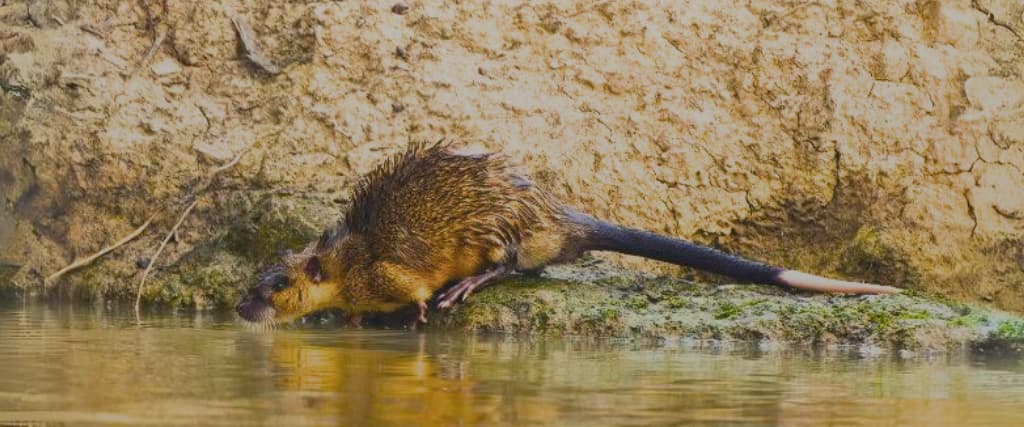
The Rakali (Hydromys chrysogaster), also called a water-rat, is a large native rodent that may reach lengths of up to 70 cm from snout to white-tipped tail. It features an elongated skull, somewhat webbed hind paws, and water-repellent, insulating hair.
The Rakali, a native of New Guinea and eastern, northern, and south-western Australia, fills a distinctive niche somewhat similar to that of otters on other continents.
It is a nocturnal, semi-aquatic animal that lives in burrows near rivers, lakes, and estuaries. Its diet includes insects, fish, crustaceans, mollusks, frogs, birds’ eggs, and waterfowl. In high-density populations, this well-adapted semi-aquatic and territorial species, which is typically solitary, may become quite hostile.
